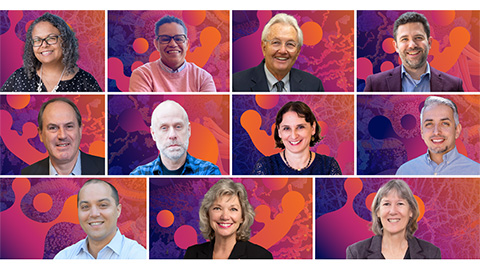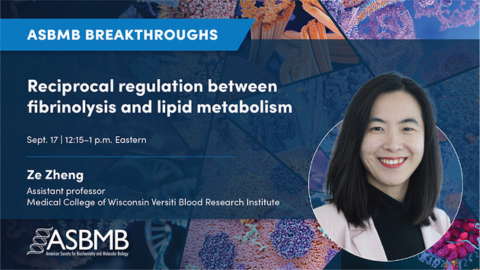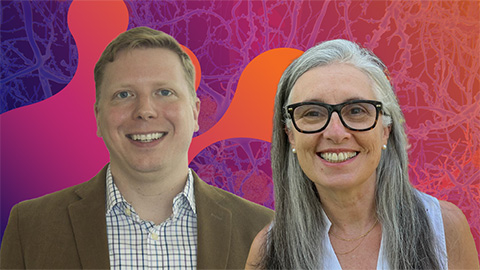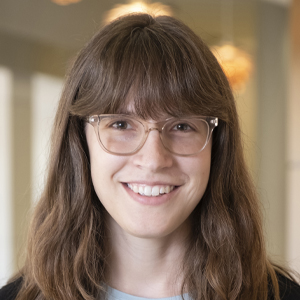Leaving, and returning to, the academy
I had heard that academia is one of those fields where if you leave you really can’t come back. There are plenty of jobs for Ph.D.s outside of academia, but, if you take them, that’s it. You’ve closed this door. I have been intrigued by that idea for a while and wondered about exceptions.
For this week’s column, I interviewed four people who spent some time in their careers outside of academia and came back to academia later. All four worked outside of academia but in positions that were not completely unrelated to their academic work. I didn’t find anyone, for example, who went into management consulting and came back to academia or who became a yoga instructor and came back. That doesn’t necessarily mean that it can’t happen. Maybe really far outside of academia is so good they don’t want to come back! Or maybe I just didn’t find anyone.
There is one position outside of academia that I’m not going to cover in this article: industry postdocs. That is a topic for another whole article, so I won't be addressing it here.
It seems relatively common to do other things before getting a Ph.D. or even sometimes to take leaves of absence during your Ph.D. Or, if you’re Brian May, you can even take a 30-year gap in your Ph.D. to form Queen, tour the world, invent new ways of orchestrating music on guitar, and then return to finish your astrophysics doctorate. But, as awesome as that career path is, I was looking for people who 1) did their outside-of-academia work after their Ph.D. and 2) came back to academia full time.
So, here is evidence that you can leave academia and come back, and you don’t have to be a literal rock star to do it. First, I’ll share the facts of each person’s story, and then I’ll talk about what it all might mean.
Tempted by a startup

Joey Davis is an assistant professor at the Massachusetts Institute of Technology. After earning his Ph.D., Davis went to work at a biotech startup, Ginkgo Bioworks.
A few factors came together for him to make the decision to move to the startup.
First, at the time Davis was finishing his Ph.D., he said, “Some close friends of mine had started this company, Ginkgo. While they got the company started, I’d helped them write grants.” So, he was somewhat involved already.
Second, at the time he was looking for post-Ph.D. work, the company got funding and was able to open a physical lab space, where Davis could be the first employee.
Third, the work itself, industrializing and automating the creation of cell lines, was appealing to him.
Lastly, Davis had applied to postdoc positions, but they were on the West Coast, far from Davis’ wife, who was also getting her Ph.D. and was not yet free to move around the country.
The combination of exciting work, with friends, in a location that worked for his personal life, made the decision a good one for that time in his life.
After about two productive years at Ginkgo, Davis felt he’d accomplished what he’d wanted to do there and turned his attention to new developments in science outside the company. He said he felt there was a turning point: “It was a good point to tackle something else, either in the company or outside of it.” It was a point at which he could either stay in industry or leave and get involved in these new developments, particularly in cryo-EM, which his lab today uses.
By that time time, his wife had defended her disseration and was ready to move elsewhere. They both took postdoc positions.
At Ginkgo, Davis’ work had focused on moving the company forward. During his postdoc, Davis had the time and resources to develop his own ideas and research plan to start his own lab, which he did a few years later. While he didn’t bring any of the specific projects from Ginkgo with him later in his career, his time there “definitely informs the type of scientist and mentor I am,” he said.
Industry first

James Cole is a professor at the University of Connecticut. Cole worked for 10 years in industry before moving directly into a faculty position at UConn.
When Cole was a Ph.D. student, he had wanted to be a professor, but during his postdoc he felt he wasn’t getting the preparation needed to run his own lab. An opportunity to work at Merck arose, and he took it.
At Merck, he said, “There really was a strong emphasis on good basic science. I published a lot.” This helped him get the training he missed in his postdoc.
Besides just doing good research, he was also able to learn many different fields and techniques. “In industry, their focus changes very quickly. Depending on market conditions, and changes in the company, I think it really made me a much stronger scientist," he said.
Over time, the environment changed, moving from basic science research that he enjoyed toward work along the lines of screening compounds. He said he began to feel less satisfied and started looking for a new job.
He had been able to publish regularly and present at conferences while at Merck, so he’d built a scientific reputation for himself, which helped him in his job search. He took a job as the director of the analytical ultracentrifugation core at UConn, which utilized his expertise.
He said he knew, though, that he “couldn't survive simply by living on collaborations only,” as might be the case as a core director, so he set up his own lab too, bringing a project with him that Merck had abandoned.
Some things he did not learn in industry were the academic responsibilities of teaching and writing grants. Once he had his new position in academia, he reached out to his colleagues to get a handle on these essential skills. He also said that getting on a study section reviewing grants early on was valuable; it helped him get up to speed on grant writing.
While his own research experience in industry ended up giving him the foundation needed to start his own academic lab, he is aware that things have changed in the years since he was working in industry. If others these days are thinking of using industry as a training ground, he said they should be aware “it’s not as easy to do the basic science I was doing in the ‘90s. These days big pharma is not investing much in basic research.”
Variety is the spice of life

Cheryl Bailey is the dean of the School of Natural and Health Sciences at Mount Mary University in Wisconsin. Her career has had several parts, including one move from industry back to academia and a few nontraditional moves within academia.
After Bailey completed an academic postdoc, she moved to a research and development position at Promega. “I put my résumé up on Monster.com, was contacted by a recruiter, and landed the job at Promega, which turned out to be a great company,” she said.
After a few years, she and her husband faced the two-professional problem, and she moved to Nebraska for her husband’s job. She was hired then as a professor at Midland Lutheran College (now Midland University), a primarily undergraduate institution.
At Midland, she taught biochem classes and ran a small lab. She chose to study bacteria because it accommodates undergraduate research well.
While it might seem a big leap to go from R&D to an undergraduate institution, she said she had gained some teaching experience during her postdoc, by tutoring medical students, which helped prepare her for a teaching-heavy job in academia. She also gave frequent presentations during her time at Promega which, while not teaching in the traditional sense, gave her experience that she could also draw on.
It was during this job at Midland that she discovered her passion for teaching and working to find the methods that best serve students, which has guided the rest of her career.
When she and her husband changed jobs again later, she made another atypical move for an academic: She moved from a small college to a big university and landed a tenure-track position.
At the University of Nebraska, Lincoln, she was an instructional biochemist. There, her research focus shifted from biochemistry to teaching and learning in biochemistry. She taught, published papers about teaching methods, and helped teachers learn and implement methods of teaching, such as the question-based POGIL (Process Oriented Guided Inquiry Learning) method that have been shown to help students learn.
After gaining tenure at UNL, she took a leave to work at the Howard Hughes Medical Institute as a program director. She later moved to Mount Mary University, where she is now a dean. This is a job that draws on all the skills she has gained over the years.
Quite out of the ordinary

Sam Sternberg is an assistant professor at Columbia University. His path was driven by making the most of his unusual circumstances.
While he was pursuing his Ph.D. in Jennifer Doudna’s lab, “all the CRISPR stuff happened," he said. (Doudna got the Nobel Prize this year for her lab’s CRISPR work.) He knew that this kind of revolution doesn’t happen every day, and he had a unique inside perspective on this advancement that was already changing biology and society. He decided toward the end of his Ph.D. program to take time to write a book about it and spent a year writing, “A Crack in Creation: Gene Editing and the Unthinkable Power to Control Evolution” with Doudna.
Toward the end of his time writing the book, he realized that, while writing was great, he was dying to get back into the lab. He started work at a genome engineering startup, Caribou Biosciences, and “as a gamble” applied for faculty positions to start his own lab. While his work as a group leader at Caribou no doubt helped him become an effective principal investigator, his applications and research plan were almost entirely based on his Ph.D. work, not his biotech work.
Sternberg mentioned that he had some anxieties about writing the book. He was aware of the “Sagan effect” that refers to the way Carl Sagan’s respect in scientific communities decreased as he wrote more popular science books. He was also afraid that, when he got into any job interview, they’d see the gap on his résumé and they would wonder what he was doing with his time. “I had moments when I felt I had gone too far and it would be hard to get back on track,” he said.
But he did it. He has his own lab at Columbia now. “Now I’m super happy, with the lab and the people I get to work with every day. I do really love the academic environment,” Sternberg said.
What does it all mean?
What can you take from all these experiences? Well, each person’s story is unique, as yours would be, but there are some common threads and insights that came up about taking less traditional routes.
Keep up with the research: First, as mentioned earlier, all of the people I interviewed spent their time outside of academia in related work, in industry/biotech or writing about their work. This means each stayed involved in research and were plugged in to what was going on in academia. They didn’t apply for academic jobs cluelessly! This makes sense. Research moves fast (although it certainly can feel slow when my Westerns don’t work) so there isn’t an incentive to hire someone who is behind and will need a lot of time to catch up.
Learn new skills: Each person not only stayed connected but brought even more useful skills with them back to academia. All of their work outside of academia seemed to make them better suited for their future academic jobs. Bailey, for example, talked to me about the importance of learning to work with a team of people with diverse interests and backgrounds at Promega — from the marketing department to the folks scaling up the production. Those skills continued to serve her for the rest of her career. Cole also spoke about the training in basic science he got at Merck that made him a better scientist. There is a more generalizable point here, too, that Bailey said: “I do think that there are opportunities for expanding your skills in any job that will apply to other industries.”
There are points of entry besides jumping back in as a professor: If you want to move back into academia but don't necessarily have the research plan and resources to realistically apply for a faculty position, returning as a postdoc might be a good option, as Davis did when he moved from Ginkgo back to academia. A postdoc position is a training position, after all.
Personal lives matter, and that’s OK: Another point that came up a few times was that people have lives outside of their work and aren’t making career decisions in a bubble. “It’s OK that your life impacts your career decisions. It's OK for that to be a reason to change career paths. In academia, people are afraid to admit they have lives outside the lab that influence them. It’s OK,” Davis said. Bailey also mentioned this with regard to her her moves with her husband. Moving or changing jobs for a personal reason doesn’t make you less of a scientist.
It’s your life. Pursue what you want, where you want: All of the people I interviewed had a streak, which I admired, of pursuing what they wanted and listening to themselves. Maybe this is a common thread for people who step outside any traditional route. They each had a feeling of wanting to go after interesting and exciting things. For Bailey, it was getting deepling involved in the process of teaching. For Cole, it was knowing he wanted to start his own lab when he was core director. For Sternberg, it was not wanting to let the opportunity to tell the story of CRISPR go by, but also knowing he didn’t want to lose his chance in academia. For Davis, it was deciding when it was time to leave the startup to pursue cryo-EM developments.
To follow your interests, even when they take you down paths you might not have planned, is something I really admire. Along these lines, Davis made the point that his goal was not to be a professor, but to do good research and mentor people so they can become better scientists, and there are many places that can happen. “You can find incredible science in academia and industry, and I wouldn't try to split hairs about where that is,” Davis said.
There are risks and it can be hard: I spoke with a fifth person, a woman who left academia to raise her children and returned a few years later. Although she is an independent PI, she has found it so difficult to regain respect as a scientist that she was unwilling to speak on the record. She has had to fight hard to be taken seriously after taking time for her family, and she doesn’t want to be further pigeonholed by talking about it more. She didn’t want to become the person who is asked to speak at conferences about work–life balance instead of her science. So, while I’m not including her full story, it’s worth acknowledging the challenges that leaving academia can bring when you do come back.
But go for it: Bailey encourages people to try for jobs they want: “All they can do is just say 'no' if you apply.”
Enjoy reading ASBMB Today?
Become a member to receive the print edition four times a year and the digital edition monthly.
Learn moreFeatured jobs
from the ASBMB career center
Get the latest from ASBMB Today
Enter your email address, and we’ll send you a weekly email with recent articles, interviews and more.
Latest in Careers
Careers highlights or most popular articles

Upcoming opportunities
The Lipid Research Division Seminar Series returns Oct. 15 with talks on recent advances in triglyceride cycling in adipocytes.

Writing with AI turns chaos into clarity
Associate professor shares how generative AI, used as a creative whiteboard, helps scientists refine ideas, structure complexity and sharpen clarity — transforming the messy process of discovery into compelling science writing.

Upcoming opportunities
Register for the free ASBMB webinar on the power of "Yes" and knowing when to use it, coming up on Sept. 30!

ASBMB names 2026 award winners
Check out their lectures at the annual meeting in March in the Washington, D.C., metro area.

Upcoming opportunities
Register for the free ASBMB Breakthroughs webinar on lipid metabolism, coming up on Sept. 17!

Peer through a window to the future of science
Aaron Hoskins of the University of Wisconsin–Madison and Sandra Gabelli of Merck, co-chairs of the 2026 ASBMB annual meeting, to be held March 7–10, explain how this gathering will inspire new ideas and drive progress in molecular life sciences.

